Econometric Tools for Macroeconomic Forecasting and Simulation
The aim of this research group is to enhance research on, and development, implementation, evaluation, and application of quantitative macroeconometric models for forecasting and analysing aggregate economic fluctuations and developments. Research in this group contributes to the econometric foundation and the methodological improvements of the IWH forecasts. During the last years, the IWH has highly specialised in macroeconomic modelling, both for flash estimates and medium-term projections. Furthermore, this group conducts comprehensive empirical analysis and develops econometric tools that are used for third-party funded projects. In the last years, particular models have been developed for e.g. Volkswagen Financial Services AG and for GIZ. The research group contributed in particular on macroeconomic modelling for ministries in Kyrgyzstan and Tajikistan as well as for the institute of forecasting and macroeconomic research (IFMR) Uzbekistan.
IWH Data Project: IWH Real-time Database
Research Cluster
Economic Dynamics and StabilityYour contact

Mitglied - Department Macroeconomics
EXTERNAL FUNDING
07.2022 ‐ 12.2026
Evaluation of the InvKG and the federal STARK programme
German Federal Ministry for Economic Affairs and Climate Action
On behalf of the Federal Ministry of Economics and Climate Protection, the IWH and the RWI are evaluating the use of the approximately 40 billion euros the federal government is providing to support the coal phase-out regions..
10.2019 ‐ 01.2023
Climate Resilient Economic Development
Deutsche Gesellschaft für Internationale Zusammenarbeit (GIZ) GmbH
Climate change has a substantial impact on economic growth and a country’s development. This increases the need for reliable and viable approaches to assessing the impact of climate risks and potential adaptation scenarios. Political decision-makers in ministries of planning and economy need sound forecasts in order to design and finance adequate economic policy instruments and actively to take countermeasures. In the pilot countries (Georgia, Kazakhstan and Vietnam), climate risk is included in macroeconomic modelling, enabling the results to be integrated into the policy process so as to facilitate adapted economic planning. The IWH team is responsible for macroeconomic modelling in Vietnam.
05.2020 ‐ 09.2023
ENTRANCES: Energy Transitions from Coal and Carbon: Effects on Societies
European Commission
ENTRANCES aims at examining the effects of the coal phase-out in Europe. How does the phase-out transform society – and what can politics do about it?
This project has received funding from the European Union’s Horizon 2020 research and innovation programme under grant agreement No 883947.
01.2018 ‐ 12.2023
EuropeAid (EU Framework Contract)
European Commission
07.2016 ‐ 12.2018
Climate Protection and Coal Phaseout: Political Strategies and Measures up to 2030 and beyond
Umweltbundesamt (UBA)
01.2017 ‐ 12.2017
Support to Sustainable Economic Development in Selected Regions of Uzbekistan
Deutsche Gesellschaft für Internationale Zusammenarbeit (GIZ) GmbH
01.2017 ‐ 12.2017
Short-term Macroeconomic Forecasting Model in Ministry of Economic Development and Trade of Ukraine
Deutsche Gesellschaft für Internationale Zusammenarbeit (GIZ) GmbH
01.2016 ‐ 12.2017
Development of analytical tools based on Input-Output table
Deutsche Gesellschaft für Internationale Zusammenarbeit (GIZ) GmbH
The aim of the project was the development of an analytical tool to assess the gains and losses of possible state programs supporting the development of the private sector of the Tajik economy.
11.2015 ‐ 12.2016
Employment and Development in the Republic of Uzbekistan
Deutsche Gesellschaft für Internationale Zusammenarbeit (GIZ) GmbH
Support to sustainable economic development in selected regions of Uzbekistan
05.2016 ‐ 05.2016
Framework and Finance for Private Sector Development in Tajikistan
Deutsche Gesellschaft für Internationale Zusammenarbeit (GIZ) GmbH
02.2016 ‐ 04.2016
Macroeconomic Reforms and Green Growth - Assessment of economic modelling capacity in Vietnam
Deutsche Gesellschaft für Internationale Zusammenarbeit (GIZ) GmbH
Refereed Publications
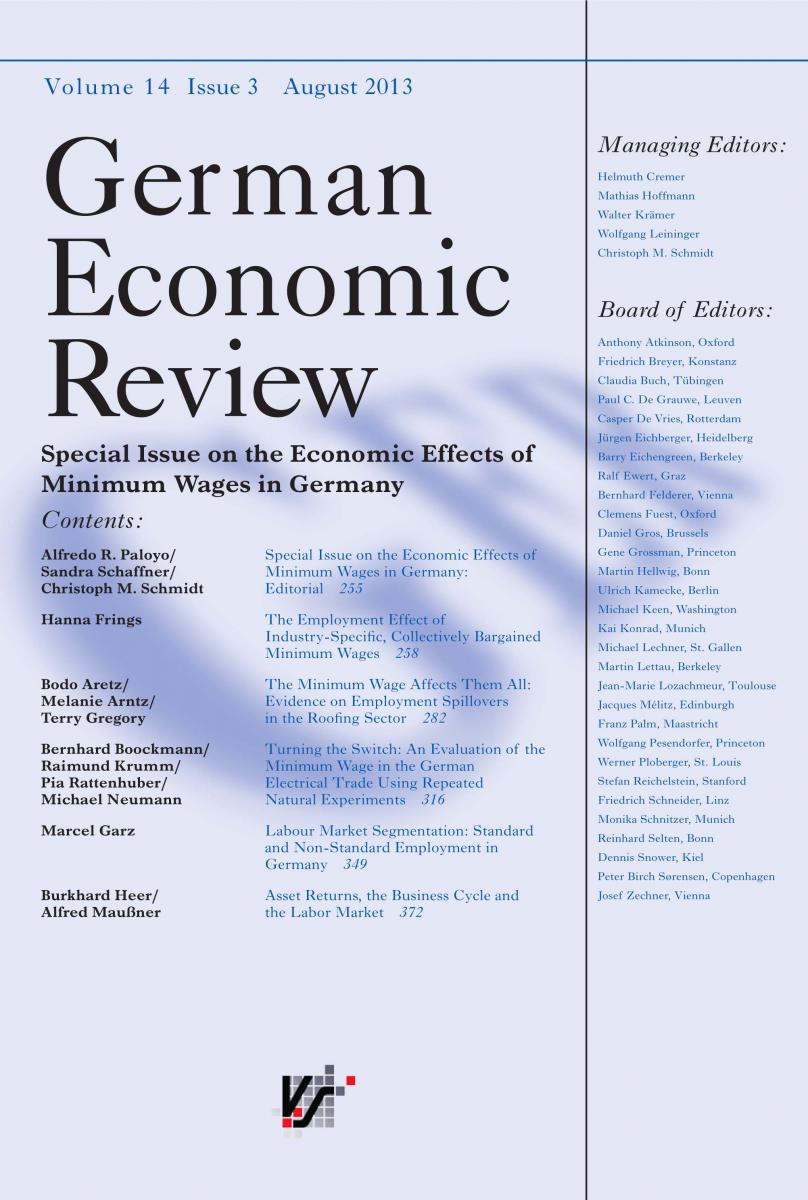
Should Forecasters Use Real‐time Data to Evaluate Leading Indicator Models for GDP Prediction? German Evidence
in: German Economic Review, No. 4, 2019
Abstract
In this paper, we investigate whether differences exist among forecasts using real‐time or latest‐available data to predict gross domestic product (GDP). We employ mixed‐frequency models and real‐time data to reassess the role of surveys and financial data relative to industrial production and orders in Germany. Although we find evidence that forecast characteristics based on real‐time and final data releases differ, we also observe minimal impacts on the relative forecasting performance of indicator models. However, when obtaining the optimal combination of soft and hard data, the use of final release data may understate the role of survey information.
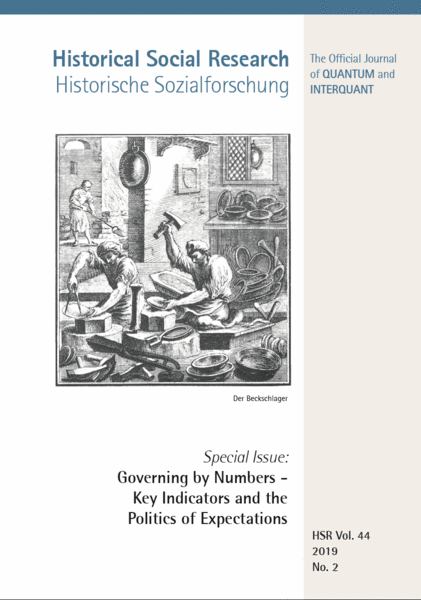
Expectation Formation, Financial Frictions, and Forecasting Performance of Dynamic Stochastic General Equilibrium Models
in: Historical Social Research, No. 2, Special Issue: Governing by Numbers 2019
Abstract
In this paper, we document the forecasting performance of estimated basic dynamic stochastic general equilibrium (DSGE) models and compare this to extended versions which consider alternative expectation formation assumptions and financial frictions. We also show how standard model features, such as price and wage rigidities, contribute to forecasting performance. It turns out that neither alternative expectation formation behaviour nor financial frictions can systematically increase the forecasting performance of basic DSGE models. Financial frictions improve forecasts only during periods of financial crises. However, traditional price and wage rigidities systematically help to increase the forecasting performance.
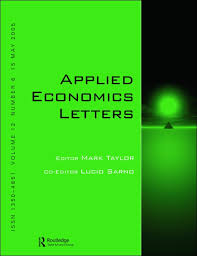
For How Long Do IMF Forecasts of World Economic Growth Stay Up-to-date?
in: Applied Economics Letters, No. 3, 2019
Abstract
This study analyses the performance of the International Monetary Fund (IMF) World Economic Outlook output forecasts for the world and for both the advanced economies and the emerging and developing economies. With a focus on the forecast for the current year and the next year, we examine the durability of IMF forecasts, looking at how much time has to pass so that IMF forecasts can be improved by using leading indicators with monthly updates. Using a real-time data set for GDP and for indicators, we find that some simple single-indicator forecasts on the basis of data that are available at higher frequency can significantly outperform the IMF forecasts as soon as the publication of the IMF’s Outlook is only a few months old. In particular, there is an obvious gain using leading indicators from January to March for the forecast of the current year.
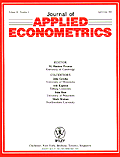
Should We Use Linearized Models To Calculate Fiscal Multipliers?
in: Journal of Applied Econometrics, No. 7, 2018
Abstract
We calculate the magnitude of the government consumption multiplier in linearized and nonlinear solutions of a New Keynesian model at the zero lower bound. Importantly, the model is amended with real rigidities to simultaneously account for the macroeconomic evidence of a low Phillips curve slope and the microeconomic evidence of frequent price changes. We show that the nonlinear solution is associated with a much smaller multiplier than the linearized solution in long-lived liquidity traps, and pin down the key features in the model which account for the di¤erence. Our results caution against the common practice of using linearized models to calculate scal multipliers in long-lived liquidity traps.
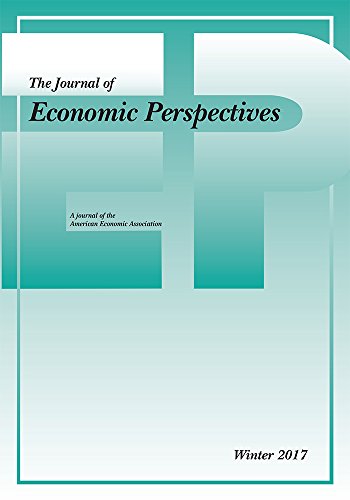
On DSGE Models
in: Journal of Economic Perspectives, No. 3, 2018
Abstract
The outcome of any important macroeconomic policy change is the net effect of forces operating on different parts of the economy. A central challenge facing policymakers is how to assess the relative strength of those forces. Economists have a range of tools that can be used to make such assessments. Dynamic stochastic general equilibrium (DSGE) models are the leading tool for making such assessments in an open and transparent manner. We review the state of mainstream DSGE models before the financial crisis and the Great Recession. We then describe how DSGE models are estimated and evaluated. We address the question of why DSGE modelers—like most other economists and policymakers—failed to predict the financial crisis and the Great Recession, and how DSGE modelers responded to the financial crisis and its aftermath. We discuss how current DSGE models are actually used by policymakers. We then provide a brief response to some criticisms of DSGE models, with special emphasis on criticism by Joseph Stiglitz, and offer some concluding remarks.
Working Papers

Outperforming IMF Forecasts by the Use of Leading Indicators
in: IWH Discussion Papers, No. 4, 2014
Abstract
This study analyzes the performance of the IMF World Economic Outlook forecasts for world output and the aggregates of both the advanced economies and the emerging and developing economies. With a focus on the forecast for the current and the next year, we examine whether IMF forecasts can be improved by using leading indicators with monthly updates. Using a real-time dataset for GDP and for the indicators we find that some simple single-indicator forecasts on the basis of data that are available at higher frequency can significantly outperform the IMF forecasts if the publication of the Outlook is only a few months old.

A Federal Long-run Projection Model for Germany
in: IWH Discussion Papers, No. 11, 2012
Abstract
Many economic decisions implicitly or explicitly rely on a projection of the medium- or long-term economic development of a country or region. In this paper, we provide a federal long-run projection model for Germany and the German states. The model fea-tures a top-down approach and, as major contribution, uses error correction models to estimate the regional economic development dependent on the national projection. For the medium- and long-term projection of economic activity, we apply a production function approach. We provide a detailed robustness analysis by systematically varying assumptions of the model. Additionally, we explore the effects of different demographic trends on economic development.

Does Central Bank Staff Beat Private Forecasters?
in: IWH Discussion Papers, No. 5, 2012
Abstract
In the tradition of Romer and Romer (2000), this paper compares staff forecasts of the Federal Reserve (Fed) and the European Central Bank (ECB) for inflation and output with corresponding private forecasts. Standard tests show that the Fed and less so the ECB have a considerable information advantage about inflation and output. Using novel tests for conditional predictive ability and forecast stability for the US, we identify the driving forces of the narrowing of the information advantage of Greenbook forecasts coinciding with the Great Moderation.

Is East Germany Catching Up? A Time Series Perspective
in: IWH Discussion Papers, No. 14, 2009
Abstract
This paper assesses whether the economy of East Germany is catching up with the West German region in terms of welfare. While the primary measure for convergence and catching up is per capita output, we also look at other macroeconomic indicators such as unemployment rates, wage rates, and production levels in the manufacturingsector. In contrast to existing studies of convergence between regions of reunified Germany, our approach is purely based upon the time series dimension and is thus directly focused on the catching up process in East Germany as a region. Our testing setup includes standard ADF unit root tests as well as unit root tests that endogenously allow for a break in the deterministic component of the process. In our analysis, we find evidence of catching up for East Germany for most of the indicators. However, convergence speed is slow, and thus it can be expected that the catching up process will take further decades until the regional gap is closed.

















